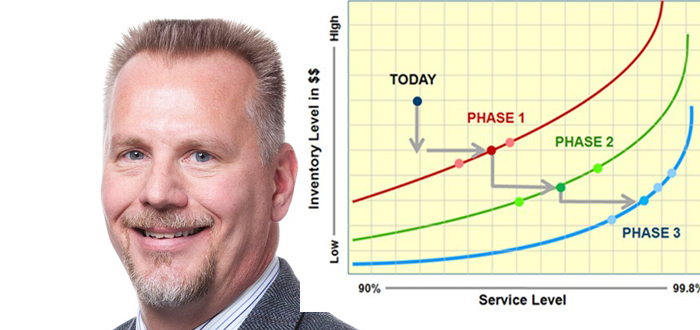-
ROSSLARE EUROPORT TARGETS HEALTH & SAFETY WITH CAMERA TELEMATICS PARTNERSHIP - 2 days ago
-
Landmark Study Reveals Wearable Robotics Significantly Boost Safety and Efficiency in Industrial Environments - July 24, 2024
-
Visku Tackle The Retail Seasonality Challenge One Pallet At A Time - July 22, 2024
-
KAMMAC AND BERGEN LOGISTICS STRENGTHEN FASHION & LIFESTYLE SERVICES IN THE UK - July 19, 2024
-
TENTBOX EXTENDS PARTNERSHIP WITH ARROWXL TO SUPPORT INCREASING DEMAND - July 17, 2024
-
The Perfume Shop improves customer journeys while driving profitability in partnership with Scurri - July 17, 2024
-
ZEROMISSION SECURES £2.3M ($3M) INVESTMENT TO ACCELERATE ELECTRIC FLEETS - July 16, 2024
-
BCMPA CELEBRATES SUCCESS OF 2024 CONFERENCE - July 15, 2024
-
Best of the Best: Jungheinrich Celebrates Triple International Award Win - July 12, 2024
-
GOPLASTICPALLETS.COM CALLS ON NEW CHANCELLOR RACHEL REEVES TO CONSIDER PLASTIC PACKAGING TAX REFORM - July 10, 2024
The Difference between IO and MEIO.
By Henry Canitz, Director of Product Marketing & Business Development, Logility
Travelling often, I run into a frustrating, yet common, problem–delays due to weather conditions at airports that are not either where I am or where I am going, but instead where the inbound aircraft is from. FlightAware, a handy and useful app for any frequent traveler, keeps track of all (or at least most) of the aircraft in our skies. According to them, in the past year there were an average of 9,728 planes carrying 1,270,406 people in the sky at any given time. These flights traveled between more than 17,000 commercial airports around the world. According to the US Department of Transportation Bureau of Transportation Statistics, 76% of all flights are on time. Considering the complexity of this multi-echelon distribution network that isn’t all that bad, unless you are on one of the 14% of flights that are late. There is a lot of coordination in air traffic control across these 17,000 airports to reduce congestion, synchronize connecting flights, ensure safety and yes improve on-time performance. Imagine if operations at each of these 17,000 airports was optimized independently from what was happening at other airports. I would venture to guess that air safety would deteriorate, congestion and hold-times would increase while on-time flights significantly decreased.
Now consider your multi-echelon distribution network. Do you optimize inventory at each location separately or are you optimizing total inventory across the entire network taking into consideration the interdependencies between stocking locations? Single-echelon Inventory Optimization or IO for short optimizes the inventory stocked at a single location or single distribution echelon independently of other locations or echelons. IO does provide some ability to streamline operations while maintaining service levels and freeing up working capital.
Multi-Echelon Inventory Optimization (MEIO) significantly extends the potential benefits by not only mix of SKUs that needs to be kept at each location and time period, but more importantly the optimal buffer locations of SKUs throughout the network and the resulting commitments between echelons. Multi-echelon Inventory Optimization can also be used to optimize the mix of different types of inventory (Component, WIP, FG) and where and how much inventory should be held by different companies in an extended supply chain to most effectively service the customer. As a supply chain practitioner, you need to understand the difference between IO and MEIO to determine which is appropriate for your company.
In the latest Nucleus Research IO Technology Value Matrix, Seth Lippincott claims there are a few key core solution capabilities when considering different IO and MEIO solutions.
1. Ease of use to help visualize and communicate how the optimization engines are generating their recommendations.
2. Transparency of calculations to help users understand why a change is being recommended
3. The option for a Cloud Deployment to speed implementation and improve return on investment
4. A single data model across a company’s planning and optimization solutions including IO/MEIO solutions.
5. Machine learning capabilities to automate model switching and to account for variability in actual demand across the supply chain.
6. Robust “what-if” scenario engines to enable supply chain planners to run simulations to determine the volumetric and financial effect of changes in inventory policies.
In the Aberdeen Group report, “Inventory Optimization – Impact of a Multi-Echelon Approach” it was reported that companies that use Multi-Echelon Inventory Optimization are twice as capable of meeting the challenge to balance cost and service levels across their network than companies that don’t. Out of the same research, the Aberdeen Group reported that MEIO users are twice as likely to tie target setting to their S&OP process. Finally, the Aberdeen Group claims that companies that deploy MEIO obtain a 28% increase in inventory turns without any decrease in customer service levels. With these types of improvements from MEIO, supply chain practitioners have identified MEIO as one of their top priorities.
What type of Inventory Optimization capability does your company need? What short and longer-term goals does your company have to optimize their end-to-end inventory?

































